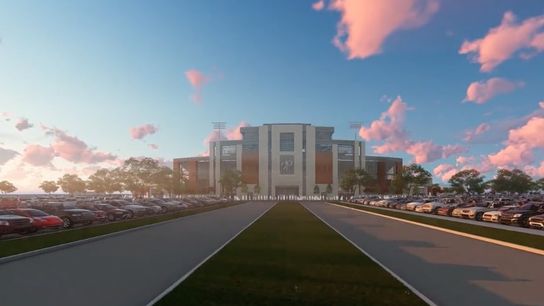Welcome to Collin County, Texas.
This county of nearly one million people lying north-northeast of Dallas is a mix of old-Texas farm towns and new-Texas financial services jobs and urban sprawl. According to the 2010 U.S. census, the median household income in Collin County was $80,504, which ranked among the top 1.46 percent nationally and first among Texas's 254 counties.
And you can see the county's wealth in its high school football facilities.
Located to the far east between Highway 121 and Highway 380 is Frisco. What was what a mere farming community two decades ago, Frisco was the nation's fastest-growing city from 2000 to '09. What was a city of 6,000 people in 1990 and 34,000 in 2000 is now home to an estimated 161,170 people. The county's sports hub, each of the Dallas area's five major professional franchises call Frisco home in one way or another: FC Dallas plays in Frisco, the Texas Rangers and Dallas Mavericks have minor-league affiliates that play in Frisco, and the Dallas Stars and Dallas Cowboys practice in Frisco. The Cowboys partnered with Frisco ISD to build a 12,000-seat indoor stadium, where Frisco's nine high schools now play.
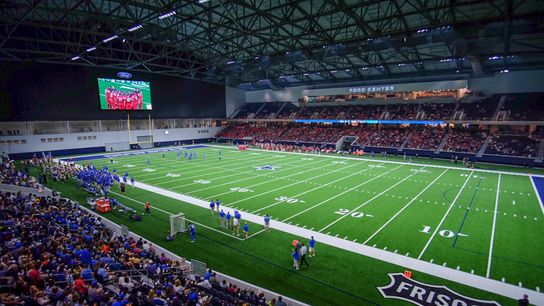
Now let's take the Dallas North Tollway south to Highway 121, then shoot down Highway 75 to Allen. A city of close to 94,179 as of a 2014 estimate, Allen has only one high school -- its 6,450 students are the most of any high school in Texas. With only one high school to support, Allen residents pour all their money into building top-of-the-line facilities for each of the school's departments. This is where Allen's football team plays.
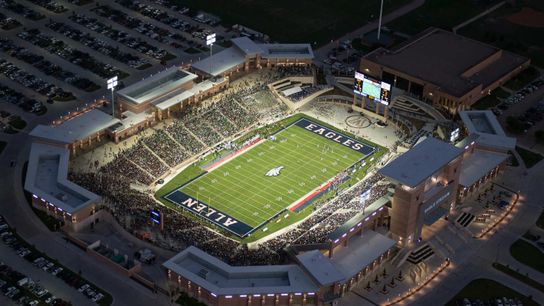
Now let's climb up Highway 75 to McKinney. The seat of Collin County, McKinney has enjoyed a similar boom as its neighbors; McKinney claimed a population of 54,000 in 2000, 131,000 in 2010 and an estimated 172,298 as of 2016. This is where McKinney's three high schools will soon play. At a cost of $70 million (Allen's stadium cost $60 million), this 12,000-seat stadium is scheduled to open this fall.
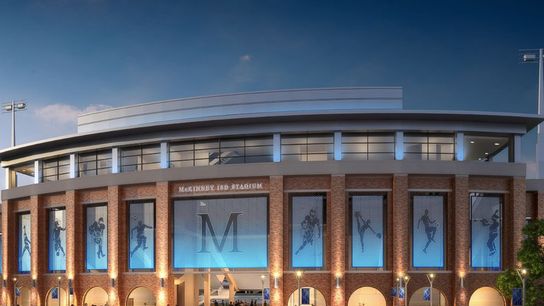

Finally, let's drive west across Highway 380, near where we started. On the north side of 380 and straddling the line splitting Collin and Denton counties, Prosper has a similar story as its neighbors, just on a smaller scale. The name of the town matches the bank accounts of its residents. In fact, here is the introduction to Prosper's Wikipedia page.
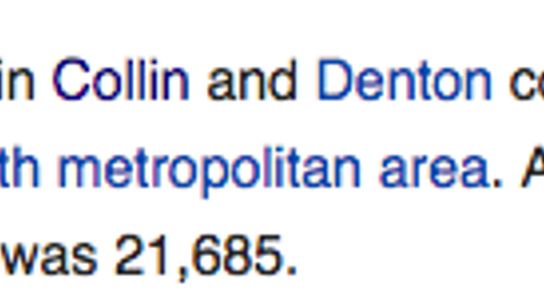
Prosper's population has grown tenfold since the turn of the century, and it'll only keep climbing. Hence, Prosper needs its own football palace.
Prosper's one high school, which for years competed in Class 2A or Class 3A, will almost assuredly qualify for Class 6A -- Texas's largest -- after the next realignment period, and a second high school is scheduled to open in 2020. As such, Prosper now needs its own $48 million, 12,000 seat facility.
Here's how Prosper ISD is selling the stadium to the public:
This project was scheduled to be constructed about 7 years ago but the “economy” happened and growth at that time dictated the need to push out new schools. Since we are not opening any new schools this year due to the uncertainty of public school funding, we have a window to insert these facilities that are needed and long overdue but do not carry any significant staffing costs as do schools. We have stretched the use of our existing stadium as far as possible given our growth. Prosper ISD continues to grow about 100% every five years and is one the top five fastest growing school districts in the state of Texas out of 1,100+ school districts. We have designed a facility that will meet the needs of PISD for many years to come while engineering it in a way that comes in at price tag $15-20+ million less expensive than recent similar projects in the metroplex and across the state.
Of course, such justification is probably overkill. Keeping up with the Joneses -- literally in Frisco's case -- is part of the culture in Collin County, and the Joneses have a great stadium.
